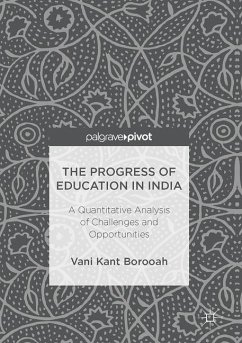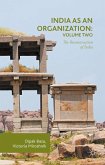This book quantitatively analyses data to demonstrate India's recent progress in the education sector. India, as one of the world's fastest growing economies, currently enjoys what is termed a 'demographic dividend' meaning that, compared to most other countries, it has a relatively young working age population. In order to exploit this advantage, the author argues that India needs to make this young population economically productive through education. The chapters in the book address whether India has succeeded in doing so, both in terms of numbers educated and the quality of their education. The author draws on specialist surveys conducted by India's National Sample Survey Office (NSSO) in 2008 and 2014 which examine the state of education in India.
Bitte wählen Sie Ihr Anliegen aus.
Rechnungen
Retourenschein anfordern
Bestellstatus
Storno








